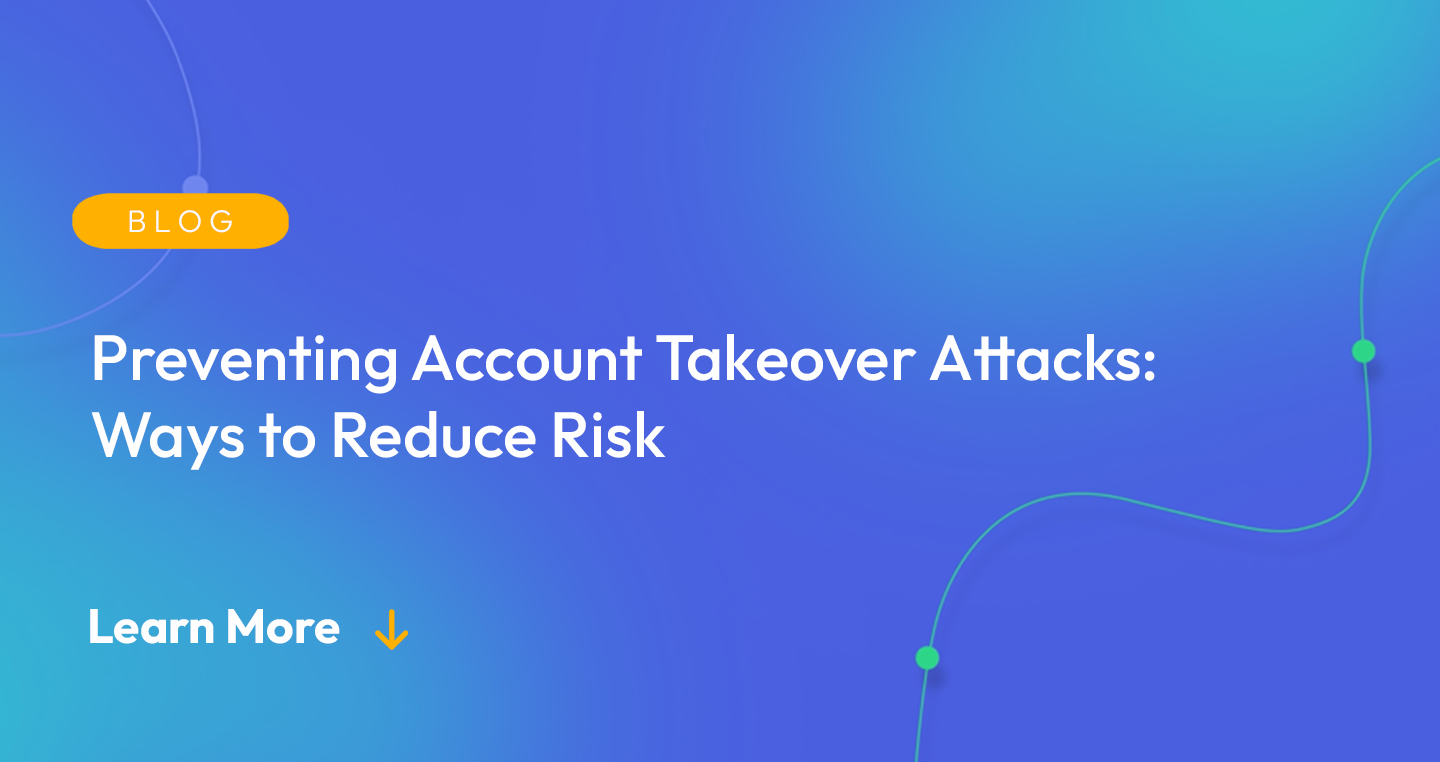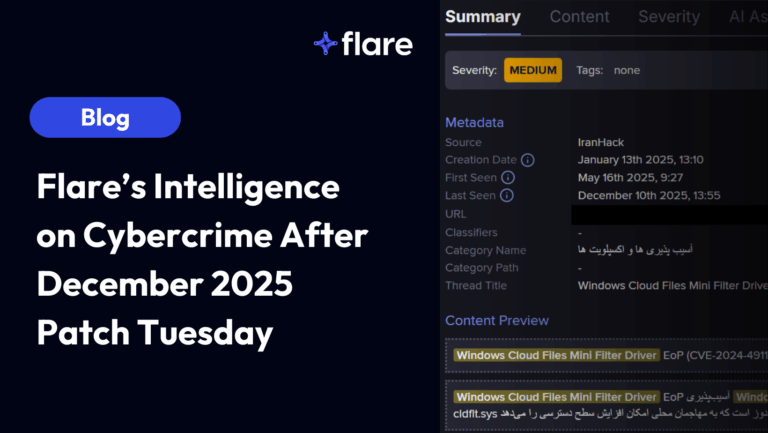
Account takeover attacks (ATOs) have become an increasingly prevalent and costly threat to individuals and organizations alike. Cybercriminals use various methods, such as phishing, credential stuffing, and exploiting leaked data, to gain unauthorized access to user accounts and exploit them for financial gain or other malicious purposes.
In this article, we will explore account takeover prevention by analyzing the mechanisms behind account takeover attacks, their consequences, and, most importantly, effective strategies to prevent them. By understanding the tactics employed by attackers and implementing proactive security measures, organizations can better protect their users and sensitive data from falling into the wrong hands.
Understanding the Methods Behind Account Takeover Attacks
Account takeover attacks are a growing concern for organizations, as they can lead to significant financial losses, reputational damage, and loss of sensitive data. To effectively prevent these attacks, it’s essential to understand the methods cybercriminals use to gain unauthorized access to user accounts. In this section, we will explore the most common tactics employed by attackers to carry out account takeover attacks:
Credential Stuffing
Credential stuffing is a method where cybercriminals use automated tools to try previously leaked credentials against various online services. Attackers often rely on data breaches and leaks to obtain large lists of credentials, hoping that users have reused their passwords across multiple platforms.
Spear-Phishing
Spear-phishing attacks involve tricking users into revealing their login credentials by impersonating a legitimate entity, such as a bank, online service, or even an employer. Phishing emails often contain links to fake login pages designed to capture user credentials or may ask users to provide their credentials or other sensitive information directly via email.
Social Engineering
Social engineering attacks exploit human psychology to manipulate individuals into divulging sensitive information, such as login credentials. These attacks can take various forms, including phone calls, text messages, or in-person encounters. By posing as a trusted individual or organization, attackers can persuade victims to provide their login details.
Password Spraying
Password spraying is a technique where attackers try a small number of commonly used passwords against multiple accounts within an organization. This approach allows cybercriminals to bypass account lockout policies and reduces the likelihood of detection compared to brute force attacks, which involve trying many different password combinations for a single account.
Malware and Keyloggers
Attackers can also use malware, such as keyloggers, to capture a user’s login credentials. Keyloggers record keystrokes made on a user’s device, allowing cybercriminals to obtain usernames and passwords when users log in to their accounts.
By understanding the tactics employed in account takeover attacks, organizations can better prepare and implement effective measures to protect user accounts and prevent unauthorized access to sensitive data.
The Consequences of Account Takeovers for Organizations and Users
Account takeover attacks have far-reaching consequences for both organizations and users, making them a significant threat to be addressed proactively. Understanding the potential impact of these attacks can help organizations prioritize their cybersecurity efforts and minimize the risk of account takeovers. Here are some of the key consequences:
Financial Losses
One of the primary motivations for account takeover attacks is financial gain. Attackers can use compromised accounts to make unauthorized transactions, steal funds, or sell sensitive information on the dark web. For organizations, these losses can be substantial, especially if a large number of user accounts are compromised.
Reputational Damage
When an organization suffers from a high-profile account takeover incident, it can severely damage its reputation. Customers may lose trust in the company’s ability to protect their data, leading to a decline in user engagement and potential loss of business.
Legal and Regulatory Consequences
Organizations that fail to protect user data may face legal and regulatory penalties. Data breach notification laws require companies to inform affected users and, in some cases, government agencies about security incidents. Additionally, organizations may be held liable for damages resulting from inadequate security measures, leading to potential lawsuits and fines.
Loss of Sensitive Data
Account takeovers can result in unauthorized access to sensitive data, including personal information, intellectual property, and trade secrets. Attackers can use this data for various malicious purposes, such as identity theft, industrial espionage, or further targeted attacks against the organization or its users.
Increased Customer Support Costs
Recovering from account takeover attacks can be a time-consuming and costly process. Organizations must invest in customer support resources to help affected users regain control of their accounts, reset passwords, and address any unauthorized activities that occurred during the attack.
Employee Productivity Loss
As organizations respond to account takeover incidents, employees may be diverted from their regular tasks to assist in the recovery process. This loss of productivity can have a direct impact on the organization’s bottom line.
By recognizing the potential consequences of account takeovers, organizations can better understand the urgency of implementing robust security measures to protect user accounts and safeguard sensitive data from unauthorized access.
Strengthening Authentication Processes to Thwart Account Takeovers
Strengthening authentication processes is a critical component of preventing account takeover attacks. By implementing robust security measures, organizations can make it more difficult for attackers to compromise user accounts and gain unauthorized access to sensitive data. Here are some best practices for improving authentication and reducing the risk of account takeovers:
Multifactor Authentication (MFA)
Implementing MFA adds an extra layer of security to the authentication process by requiring users to provide at least two forms of identification. Typically, this involves something the user knows (e.g., a password), something the user has (e.g., a hardware token or mobile device), and/or something the user is (e.g., a fingerprint or facial recognition). MFA significantly reduces the risk of account takeovers by making it more difficult for attackers to gain access with stolen credentials alone.
Strong Password Policies
Encouraging users to create strong, unique passwords can help protect against account takeover attempts. Organizations should implement password policies that require a minimum length, a mix of uppercase and lowercase letters, numbers, and special characters. Additionally, users should be encouraged to avoid using easily guessable information, such as names or birthdays, and to change their passwords regularly.
Account Lockout and Monitoring
Implementing account lockout policies can help prevent brute-force attacks by limiting the number of unsuccessful login attempts allowed before an account is temporarily locked. Monitoring user login activity can also help organizations detect suspicious behavior, such as multiple failed login attempts or logins from unusual locations, and take appropriate action to protect user accounts.
Risk-Based Authentication
Risk-based authentication involves assessing the risk level associated with each login attempt based on factors such as the user’s device, location, and behavior. By analyzing this data, organizations can require additional authentication steps for high-risk login attempts, such as sending a one-time password (OTP) to the user’s registered phone number or requiring the user to answer security questions.
User Education and Training
Educating users about the importance of account security and best practices for protecting their accounts is crucial in preventing account takeover attacks. Organizations should regularly conduct security awareness training, emphasizing the need for strong passwords, enabling MFA, and being vigilant against phishing and social engineering attacks.
By strengthening authentication processes, organizations can significantly reduce the risk of account takeover attacks and safeguard user data from unauthorized access. Implementing these best practices can help create a more secure environment for both users and the organization as a whole.
Implementing Proactive Monitoring and Incident Response for Account Takeover Prevention
Proactive monitoring and incident response are essential components of a comprehensive strategy for preventing account takeover attacks. By actively monitoring for signs of suspicious activity and having a robust incident response plan in place, organizations can quickly detect and mitigate potential account takeovers before they lead to significant damage. Here are some key steps for implementing proactive monitoring and incident response for account takeover prevention:
- Establish Baselines and Monitor for Anomalies: Establishing a baseline for normal user behavior helps organizations detect unusual activity that may indicate an account takeover attempt. Continuously monitoring user login patterns, device usage, and access to sensitive resources can reveal deviations from the baseline and prompt further investigation.
- Set Up Alerts for Suspicious Activity: Implementing automated alerts can help security teams stay informed about potential security incidents. Alerts can be triggered by events such as multiple failed login attempts, account lockouts, or login attempts from unusual locations. Timely alerts enable organizations to respond quickly and minimize the risk of a successful account takeover.
- Leverage Threat Intelligence Feeds: Integrating threat intelligence feeds into your security monitoring systems can help organizations stay up-to-date on the latest account takeover tactics and indicators of compromise. This information can be used to enhance monitoring efforts and identify potential threats more effectively.
- Develop a Comprehensive Incident Response Plan: A well-defined incident response plan is crucial for mitigating the impact of account takeover attacks. The plan should outline clear roles and responsibilities for team members, establish communication protocols, and define steps for containing and resolving incidents. Regularly reviewing and updating the plan ensures that it remains relevant and effective in the face of evolving threats.
- Conduct Regular Security Assessments: Regular security assessments can help organizations identify vulnerabilities in their systems and processes that could be exploited in an account takeover attack. By addressing these vulnerabilities proactively, organizations can reduce their attack surface and strengthen their overall security posture.
- Foster a Culture of Security Awareness: Ensuring that all employees are aware of the risks associated with account takeover attacks and the best practices for preventing them is crucial. Regular training and education initiatives can help create a security-conscious culture that reduces the likelihood of successful attacks.
By implementing proactive monitoring and incident response measures, organizations can better protect themselves from account takeover attacks and minimize the potential damage resulting from unauthorized access to sensitive data and systems. This proactive approach is a key component of a robust cybersecurity strategy that safeguards both users and organizations from the risks associated with account takeovers.
Preventing Account Takeovers with Flare
The Flare Account and Session Takeover Prevention (ASTP) solution is designed to help large consumer SaaS web applications prevent the takeover of customer accounts.
Attackers have found session cookies to be an invaluable asset as they enable bypassing authentication, even multi-factor authentication. By combining these cookies with information from stealer logs and leveraging tools such as VPNs and anti-detect browsers, they can seamlessly take over active sessions. Once stolen, a session cookie allows attackers to maintain access to an account for the duration of the session, regardless of the original user’s security protocols.
Flare Account and Session Takeover Prevention addresses this growing threat by maintaining a cutting-edge repository of leaked credentials and active session cookies. Through API access, organizations can leverage this data to swiftly revoke compromised sessions, mitigate fraudulent activity, and enhance user security. By tackling stolen cookie sessions, Flare Account and Session Takeover Prevention closes a significant gap in preventing account takeovers, offering a proactive solution to a growing cybersecurity challenge.





